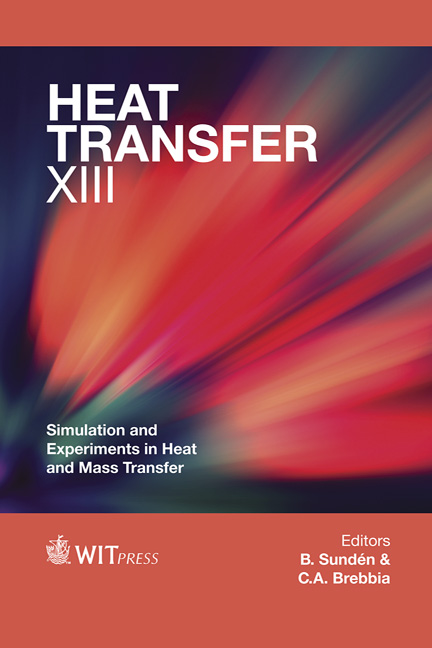Heat Flux From Stagnation-point Hydrogen-methane-air Flames: Experiment And Modelling
Price
Free (open access)
Transaction
Volume
83
Pages
15
Page Range
401 - 415
Published
2014
Size
740 kb
Paper DOI
10.2495/HT140351
Copyright
WIT Press
Author(s)
M. S. Elmnefi, S. Staude, U. Bergmann & B. Atakan
Abstract
Hydrogen-methane-air flames were studied in stagnation-point geometry. Light induced phosphorescence from thermographic phosphors was used to study the wall temperatures and heat fluxes from nearly one-dimensional flat premixed flames. The studied flames were stoichiometric methane-air flames with 10%, 25%, 50% and 75% hydrogen as well as a pure hydrogen flame at ambient pressure. The flames were burning in a stagnation-point arrangement against a water cooled plate. The central part of this plate was an alumina ceramic plate coated from both sides with chromium doped alumina (ruby) and excited with a Nd:YAG laser or a green light emitting diode (LED) array to measure the wall temperature from both sides and thus the heat flux rate from the flame. The cold gas velocity was varied from 0.1 m/s to 1.2 m/s. The measured heat flux rates indicate the change of the flame stabilization mechanism from a burner stabilized to a stagnation plate stabilized flame. Flame temperatures were also measured using OH-LIF. The results were compared to the modeling results of a one dimensional stagnation-point flow, with a detailed reaction mechanism. This geometry may be well suited for further studies of the elementary flame wall interaction. The flame temperatures modeled were generally around 200 K lower than those measured. Keywords: heat flux, thermographic phosphors, stagnation-point flow, hydrogen enriched flames, Nd:YAG laser, light emitting diode, OH-LIF, mole fraction.
Keywords
heat flux, thermographic phosphors, stagnation-point flow, hydrogen enriched flames, Nd:YAG laser, light emitting diode, OH-LIF, mole fraction.





